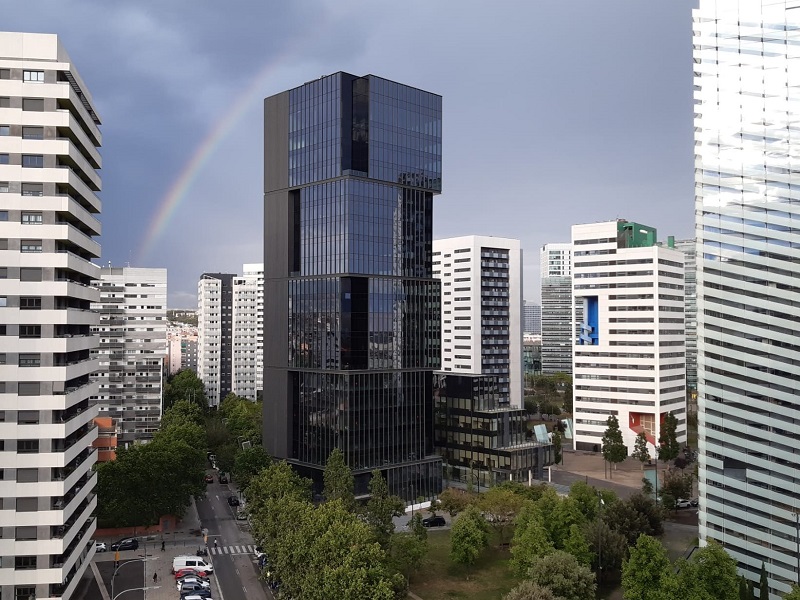For a construction project to be considered circular, it must address five aspects: meeting the three "Rs" in waste (reduce, reuse, and recycle), in addition to the use of recycled materials and the reduction of CO2 emissions.
In Catalonia, we have two pioneering projects in the implementation of these measures: an office building at Plaza Europa 34 in Hospitalet de Llobregat (Barcelona) and a development of 95 multi-family homes in Viladecans (Barcelona).
“The first project where we applied circular economy initiatives was the office building”, explains Eugenia Riqué Soriano, Head of Quality, Environment, and Energy, who is responsible for implementing circularity in construction processes.
Eugenia shared her experiences in the Circularization Program for Companies that we have underway at the Circular Economy Innovation Center (CIEC) in Madrid, where she explained the processes implemented in this building, which contributed to achieving LEED Gold certification with a very high score of 71 points.
Among the challenges overcome was the lack of space on site, for which they worked with containers to properly separate waste factions and accumulate quantity, thus filling trucks to the maximum.
"For the first time, we valorized 100% of the gypsum board scraps, returning them to the manufacturer to be recovered and reused as by-products. This prevented such waste from ending up in a landfill, as is usually the case. We accumulated the containers on each floor, storing them until we could fill a large truck and send it off. We did the same with mineral wool," Riqué explains.
"The key to everything was the involvement of supervisors and on-site personnel. It’s thanks to them that we successfully implemented these initiatives," says Riqué.
Regarding the use of recycled materials, Riqué pointed out as a novelty the use of 100% recycled sand from the demolition of other projects, which was incorporated into the mortar screeds of the different floors. "For me, it was a milestone: the easiest thing is to extract from quarries, although I encountered some resistance, we were able to demonstrate that it's just as good."
Pilot Project in Viladecans
Riqué is now working on the Viladecans homes, where they have proposed a pilot project to further advance circularity. "In addition to the initiatives implemented in the tower, in these homes, we are also valorizing 100% of the polystyrene and other plastics, the structure incorporates concrete with a reduced carbon footprint, we have used 100% recycled aggregate in the cladding of retaining walls, and the mortar screeds contain 100% recycled plastic fibers. The custom manufacturing of some materials also allows us to reduce waste generation," Riqué explains.
Additionally, she highlights the importance of teamwork in achieving circularity: advising, listening, and earning the complicity of staff to achieve objectives.
Sacyr has a business development model that aims to optimize resource use, reduce waste generation, and for those that cannot be avoided, process and valorize them to the maximum. All our activities are aligned with the circular economy.
